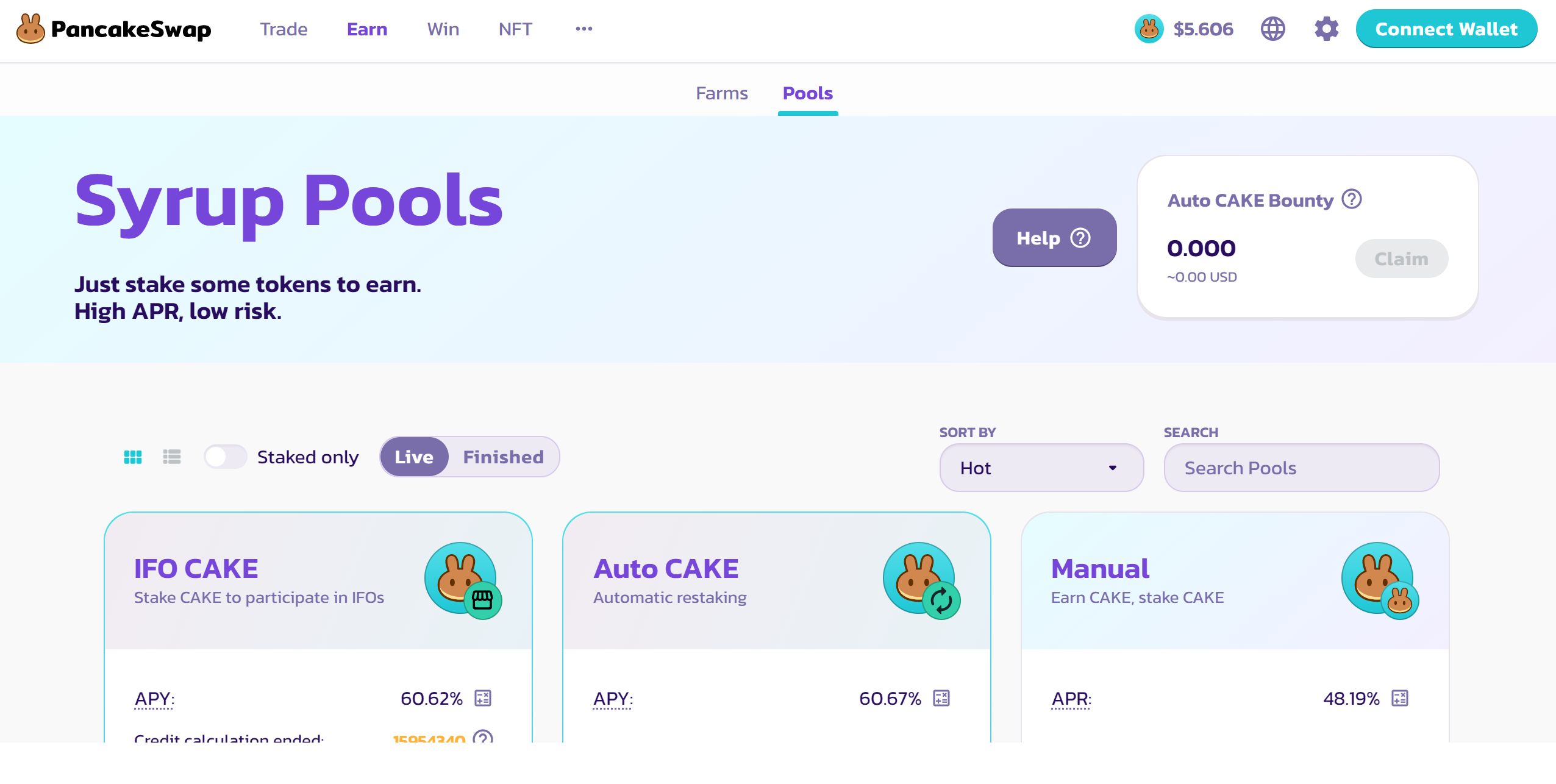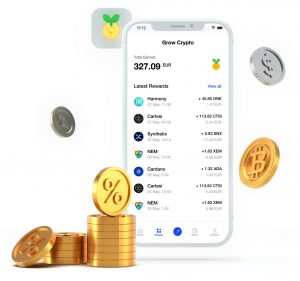Staking in cryptocurrency is a popular trend among investors. This involves finding the best crypto staking platform to lock your assets and receive more coins/tokens in return. However, there’s a lot more to it.
Like many other crypto-related concepts, staking can be very complex yet simple depending on your background knowledge. This article will help you understand what is staking in cryptocurrency even if you’re entirely new.
- Staking in Cryptocurrency: Definition
- What is Proof-of-Stake?
- Types of Staking in Cryptocurrency
- Best Coins to Stake
- Best Crypto Staking Platforms
- Frequently Asked Questions About Staking in Cryptocurrency
Staking in Cryptocurrency: Definition
Cryptocurrency staking involves earning rewards for holding a particular crypto asset for a period of time. Simply put, it is the process of dedicating your assets to a blockchain network which compensates you in return. Check out Polymesh staking as an example – they’re an up-and-coming institutional-grade permissioned blockchain created to streamline the use of regulated assets.
As complicated as it might sound, staking in cryptocurrency is quite an easy task. It’s as easy as hitting a button and walking away while your crypto holdings earn passive income for you. The reward you earn after staking your crypto is based on the quantity of coins you hold, the APY, and the duration of the staking period.
Investors often confuse staking vs mining cryptocurrency. Yes, both concepts reward crypto users but they are not the same.

Staking vs Mining
Cryptocurrency staking involves locking certain types of coins or tokens to facilitate transactions and secure the blockchain network. Cryptocurrency mining, on the other hand, requires computational power that requires heavy hardware to function. It is a process that validates and creates new coins by solving complex mathematical puzzles. In return, miners receive rewards for their computational efforts.
Note that the reason your staked tokens earn rewards is because the blockchain associated with the cryptocurrency puts it to work. Users receive certain benefits in percentage when the protocol chooses their assets to process blocks of transactions.
Another difference between staking vs mining is that staking seems to be the future of cryptocurrency. Unlike mining-based systems that are expensive to set up, blockchains that support staking are considered environmentally friendly and easier to manage.
Now that you know the difference between staking vs mining, we’ll take a closer look at Proof-of-Stake (PoS), a consensus mechanism which powers the most basic form of staking in cryptocurrencies.
What is Proof-of-Stake?
Blockchain networks that permit staking make use of a consensus mechanism known as Proof-of-stake (PoS) to ensure that transactions are verified and secured before processing.
Proof-of-stake (PoS) is a consensus mechanism adopted by blockchain networks to create and validate blocks to maintain integrity. It works by allowing validators to authenticate transactions based on the quantity of crypto assets held.
A validator is an individual or firm that creates new blocks or verifies transaction blocks to earn rewards from a network. The idea is to safeguard decentralized platforms while validating each block within the blockchain. Each block contains numerous blockchain transactions, hence this validation process guarantees that all transactions are open and not altered in any way.
For this to happen, the nodes in a blockchain must comply with the new data presented to the blockchain before validating transactions.
The PoS mechanism was first introduced in 2012 by Sunny King and Scott Nadal for Peercoin, describing it as a “peer-to-peer cryptocurrency design derived from Satoshi Nakamoto’s bitcoin.”
PoS was developed to solve the high energy consumption problem of the Proof-of-Work (PoW) mechanism. This allows the nodes of the associated blockchain to come to an agreement with all the details provided on the network to prevent any form of attack.
In Proof-of-Stake, participants can lock their cryptocurrency with just a click and at intervals, the protocol selects one of them to add to the next block. The probability of being chosen is dependent on the amount of coins or tokens deposited. The higher the crypto assets, the better the chances of winning.
Before the advent of PoS, blockchains used Proof-of-Work to verify transactions. In PoW, members of the network (miners) expend effort to solve computational puzzles and whoever gets it right takes the lead to add the next block to the blockchain. The work of solving the hash challenges is to help secure the protocol and miners are rewarded at the end of every successful block.
Having learned what is staking in cryptocurrency, and the concept of PoS, let’s consider the types of staking available to investors.
Types of Staking in Cryptocurrency
There are numerous staking methods for investors to earn rewards on their assets. Here are the different types of staking in crypto:
-
Validator Staking
Every blockchain has a series of nodes built on it and the nodes are responsible for storing blocks of data. However, this data will need to be first verified on PoS blockchain networks before storage. This is where the validators come into play.
As mentioned earlier, validators “validate” or verify transactions on a PoS blockchain to earn rewards. To become a validator, you need to have a certain amount of cryptocurrency depending on the coin associated with the network. These cryptocurrencies can sometimes be in millions of dollars or less. The higher the amount of crypto held, the better the chances of being selected to validate blocks.
Like every other type of staking in cryptocurrency, validators earn according to the amount of tokens locked up in the pool. Blockchain validators can also collect funds from individuals who do not have enough crypto holdings to become a validator, stake it on their behalf and still earn rewards based on the percentage of their coins.
-
Cold or Offline Staking

Cold staking, also referred to as offline staking is the process of locking up cryptocurrencies in a designated offline wallet or a cold wallet not connected to the internet while earning rewards. This method of staking in cryptocurrency can be done using a hardware wallet and sometimes an air- gapped software wallet.
Offline staking is often preferred by large investors who want to safeguard their assets while supporting the network.
It is important to note, however, that not all networks support offline crypto staking. The ones that do, don’t necessarily have to operate a validating node associated with the PoS consensus model.
It’s important to note that once you remove your tokens from cold storage, you’ll automatically stop receiving rewards.
Those who wish to engage in cold staking can do so either by becoming a super staker or delegate to a validator. In super staking, a node accepts delegated stakes from other token holders. This means that they can simply stake for others without touching their coins.
Apart from earning rewards, cold staking also provides additional opportunities for those running super staking nodes to earn a fee paid directly from the block reward. There are a number of crypto companies that support staking cryptocurrencies in an offline wallet. You just have to choose the one that suits your needs.
-
Liquid Staking
Liquid staking is fast becoming a trend among crypto investors. This type of staking in cryptocurrency comes as a great alternative to typically avoid the risks associated with illiquidity and centralization.
Generally, cryptocurrency staking involves locking up staked funds for a certain period of time. This means that you will be unable to transfer, sell or use the funds until the staking period is over.
The length of the period depends on the type of coin and the platform used. This process helps to improve the blockchain’s security and robustness without consuming large amounts of energy.
However, with liquid staking, users can easily access their funds even after staking them. The funds are kept in escrow and are not locked up as they should be. The stakers are then provided with a tokenized version of the staked funds which can be used in the same way you would use the original fund.
Liquid staking does not have a lengthy unstaking procedure. This makes it convenient to stake and unstake your funds at will. It also offers users the best of both worlds, which is receiving rewards and access to the staked assets.
Examples of popular liquid staking protocols across different networks include Lido Finance and Marinade Finance.
Best Coins to Stake
There are so many cryptocurrencies that you can stake depending on the blockchain or crypto platform you choose to use. Some of the best staking cryptocurrencies include:
- Bitcoin (BTC)
- Ethereum (ETH)
- Tezos (XTZ)
- Cosmos (ATOM)
- Axie Infinity (AXS)
- VeChain (VET)
- Solana (SOL)
- Avalanche (AVAX)
- Near Protocol (NEAR)
- Terra (LUNA)
- Pancakeswap (CAKE)
- Polygon (MATIC)
- Cardano (ADA)
- Kava Protocol (KAVA)
- Polkadot (DOT)
- Tron (TRX)
Best Crypto Staking Platforms
If you’re new to staking cryptocurrency, choosing the right platform can be a little overwhelming as each platform comes with its own special offerings. However, one of the easiest ways to stake crypto is by using exchanges.
While cryptocurrency exchanges are traditionally designed to buy and sell crypto, many exchanges have introduced new programs enabling users to get more out of their holdings. Some of these features include a lending program, staking, margin trading and many more.
When picking the best crypto staking platforms, be sure to understand how the service operates. Know the staking periods and the rate at which rewards are paid as well as their unstaking procedures.
Here is a compiled list of the best crypto staking platforms:
1. Binance

Binance, the world’s largest crypto exchange, is arguably the best crypto staking platform that offers risk-free staking opportunities with high returns. The exchange provides users with many options when it comes to staking in cryptocurrency. Stakeholders can earn up to 104.62% APY depending on the crypto assets committed to the platform.
To join the staking pool in Binance, all you have to do is hold your proof of stake coins. The platform does the other work for you without charges. Binance staking rewards are distributed at the start of every month. You can also check your history under the historical yield tab to see the previous rewards of a particular coin.
2. Coinbase

Coinbase offers users the opportunity to earn rewards in crypto with as little as $1. However, it is always better to hold more coins to earn better rewards. Depending on the coin staked, you can earn as high as 5.00% APY.
Coinbase staking is very simple and easy to access for newbies. You can lock up your cryptocurrency with just a few clicks. The exchange stakes, generates and signs blocks without taking the ownership rights of the coin.
The crypto platform only allows users who have verified their identity and also live in a location where staking is allowed to participate in the program. Eligible customers do not necessarily have to purchase coins on Coinbase to earn staking rewards.
3. Kraken

Kraken is one of the many exchange platforms that offers the best deals when it comes to staking. The exchange offers both cryptocurrency and fiat options for staking and their rewards go as high as 23% APY depending on the selected crypto.
There’s no minimum time to stake your crypto, although some coins may require a bonding period. Rewards are distributed once or twice a week among users. The longer you stake the higher the reward.
Kraken staking also offers users both online and offline staking options. Note that offline options are only available in selected locations only.
4. Crypto.Com

Crypto.Com is among the top lists of exchanges that offer eligible users an opportunity to earn cryptocurrency online. Only customers who reside in locations such as Hong Kong SAR, Switzerland, or Malta will not be able to access the service. However, the exchange is making plans to make the products available for all.
Crypto.com offers the following staking services to users: flexible holding terms, 1-month holding terms, 3-month holding terms. Users can enjoy a 12 month holding term only if they use Cronos, formally known as CRO, the platform’s native coin.
5. PancakeSwap

Pancakeswap has become a popular decentralized exchange built on the BNB Chain due to its extremely low trading fees. Users can earn passive income by staking eligible coins to their Syrup Pools.
The exchange offers users options to stake either CAKE, which is the platform’s native token, or other available tokens in the Syrup Pool. Pancakeswap also provides two additional options for stakers: You can choose to stake your CAKE in the Manual CAKE pool or Auto CAKE.
The Auto CAKE pool automatically compounds your rewards while Manual CAKE allows you to harvest and restake your CAKE.
Users can earn as high as 45% APY for staking in the CAKE pool. The rewards depend on the selected pool as each pool has its compound earnings and performance feed.
Another pool allows users to stake their cake and earn rewards from dozens of other cool tokens. The exchange lets users stake for as long as five years and you can also choose to stake it for just one day. However, you will be charged a small fee for unstaking tokens within the first three days.
6. MyCointainer

MyContainer is a cryptocurrency staking platform where earning interest on your assets is as simple as depositing assets on the platform. Like other centralized staking services covered so far, the platform also gives you the option to directly purchase cryptocurrencies with fiat.
At the time of writing this article, MyCointainer supports over 103 assets (including stablecoins), making it one of the largest staking service providers in terms of supported assets. The platform charges a fee between 1-2% from accrued staking rewards, although there is an option for users to eliminate the fees. Lastly, the platform also supports cold staking, allowing investors who wish to do so to directly delegate coins to its nodes.
Frequently Asked Questions About Staking in Cryptocurrency
What is a Staking Pool?
Staking pools are stakeholders combining assets and computing power to increase their overall staking power which increases their chances of earning rewards. In simpler terms, a staking pool allows a group of coin holders to merge their assets to earn higher rewards.
Is Staking Crypto Worth It?
Staking in crypto is undoubtedly the best way to earn more out of your assets. It provides a passive income for just holding a particular cryptocurrency for a period of time. Despite several factors that cause cryptocurrency to rise and fall, staking crypto remains one of the simplest ways to earn more.
Is Staking Crypto Safe?
Staking is a low risk investment strategy in which the profits far outweigh the risks. However, one of the risks of staking crypto is that stakers can suffer impermanent loss. This happens when there’s a drop in the price of the staked asset, to the extent that the investor is in losses despite the earned rewards. Investors must also consider other crypto staking risks such as platform hacks and stern lockup periods when deciding to stake.
In this article, we provided a comprehensive definition of staking in cryptocurrency, an overview of PoS, the difference between staking vs mining, the best crypto staking platforms, and frequently asked questions about cryptocurrency staking. Staking cryptocurrencies does not require any special skill like trading — both beginner and expert investors can benefit from staking rewards.
- Bitcoin Falls to $65K as Mt. Gox Transfers $2.8 Billion BTC to External Wallet
- News of Marathon Digital’s $138 Million Fine for Breach of Non-Disclosure Agreement Triggers a Bearish 2.5% of Its MARA Stock
- Are $530M Bitcoin ETF Inflows a Blessing or Caution?
- Metaplanet Teams with Hoseki for Real-Time Bitcoin Holdings Verification
- 10 Best Meme Coins To Invest in 2024
- Building Secure Blockchain Systems: An Exclusive Interview with ARPA and Bella Protocol CEO Felix Xu
- Building The “De-Facto Crypto Trading Terminal”: An Exclusive Interview with Aurox CEO Giorgi Khazaradze
- Building a New Global Financial System: An Exclusive Interview With Tyler Wallace, Analytics Head at TrustToken
- “Solana is the Promised Land for Blockchain” — An Exclusive Interview with Solend Founder Rooter
- El Salvador: Where The Bitcoin Revolution Begins With A Legal Tender

 Why Trust Us
Why Trust Us







